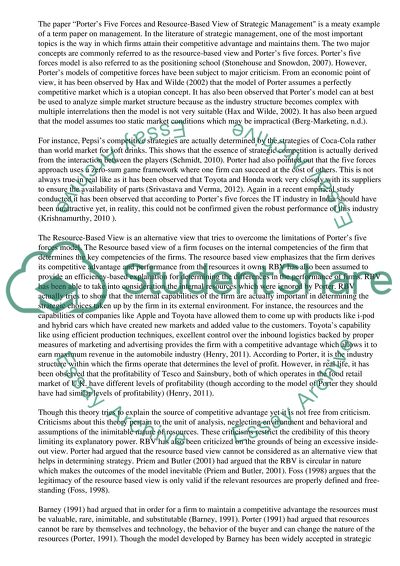Criticism of Porter's Competitive Forces Model and Resource-Based View Term Paper. https://studentshare.org/management/1825769-answering-an-exam-question-on-strategic-management
Criticism of Porter'S Competitive Forces Model and Resource-Based View Term Paper. https://studentshare.org/management/1825769-answering-an-exam-question-on-strategic-management.


